Green tomatoes, with their bright acidity and crisp texture, make excellent pickles. And just like ripe tomatoes, they pair beautifully with chilis and garlic.
But what you may not know is that you can toss them in a jar with a little salt water and ferment them too. Fermented green tomatoes are simple to make, and a lot easier than making pickles with vinegar.
Jump to Recipe | What are they? | Tips | Equipment | Variations
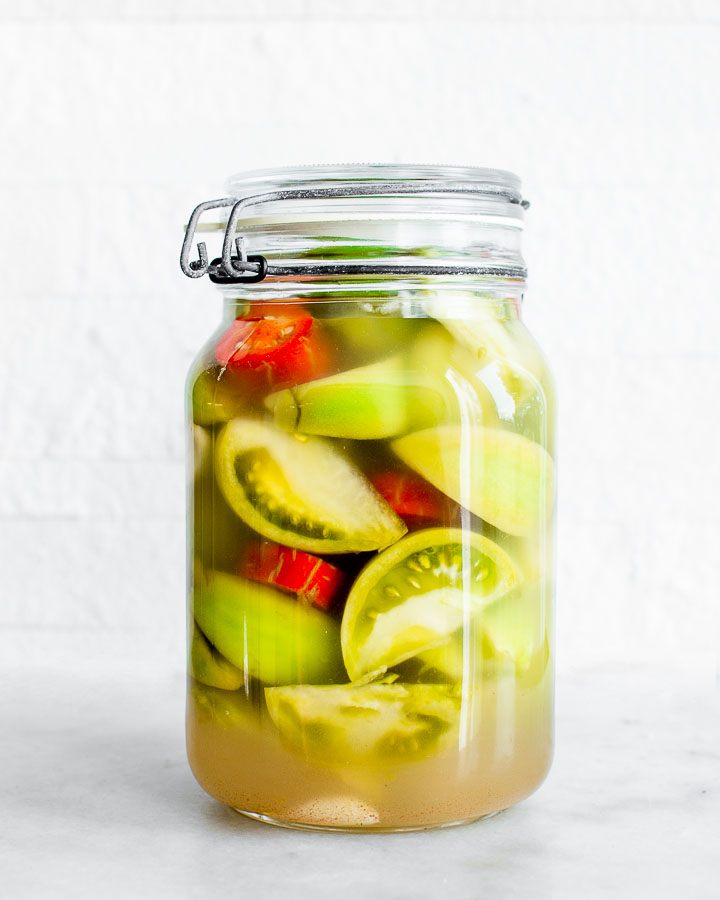
What are fermented green tomatoes?
Fermented green tomatoes are unripe tomatoes that have been fermented in a slightly salty brine. Recipes often include additional ingredients, like chilies, garlic, or spices, which add flavor to the tomatoes while they ferment.
Their pleasantly sour and slightly salty flavor tastes similar to traditional pickled green tomatoes. However, unlike vinegar-pickled tomatoes, fermented green tomatoes are rich in probiotics like sauerkraut, fermented carrots, kimchi, and other fermented vegetables.
Tips for Fermenting Green Tomatoes
While making fermented vegetables and other probiotic foods can feel daunting, it's actually a fairly simple and straightforward process. As long as you can fill a jar and mix salt with water, you can make fermented vegetables.
You start first by whisking salt into warm water until it dissolves. Salt gives vegetables, like green tomatoes, flavor and it also helps keep them crisp while they ferment.
Next, you'll fill your jar with green tomatoes, chilis, garlic, and any other spices you like. After that, you fill the jar with saltwater, seal it and allow the tomatoes to ferment until they taste pleasant to you.
More Tips for Making Fermented Green Tomatoes
- Use a fermentation seal. Fermentation is, ideally, an anaerobic process. That means you want to keep oxygen out while allowing the CO2 that builds up during fermentation to escape. A quart-sized jar with a fermentation seal like this helps.
- Keep tomatoes under the brine. Weighing down vegetables with a fermentation weight helps keep them under the brine, and away from mold.
- Taste your tomatoes. Your tomatoes are ready when they taste good to you, so try tasting them for around 14 days and continue tasting them until they acquire a pleasant sourness that you like best.
- A light, white film may develop. Kahm yeast is a benign white film that you'll sometimes find on your ferments. You can spoon it off, and your tomatoes will be fine.
Fermentation Crocks and Jars
Vegetable fermentation is an anaerobic process. That means that beneficial bacteria benefit from an airtight environment, in which oxygen is kept out. However, beneficial bacteria responsible for fermenting your tomatoes will release carbon dioxide that can build up in an airtight container.
Using equipment designed for fermentation ensures that you create the optimal environment for all those good bacteria, while also limiting the chances of contamination by stray microbes like molds.
That means you'll want to use either a fermentation crock with a water well or a jar equipped with a fermentation seal when you make fermented green tomatoes.
- Fermentation crocks are heavy, and fairly expensive and you have to ferment a large volume. They're excellent cooks for people who love fermentation and eat many fermented foods.
- Jars with fermentation seals are a good choice for small batches of fermented vegetables and are relatively inexpensive.
- Jars without seals work too; however, you'll need to burp your jars regularly to allow the carbon dioxide that builds up to escape.
How to Serve Fermented Green Tomatoes
Most pickles and many fermented vegetables work well as an appetizer. The flavors of saltiness and sourness act as appetizers - kickstarting the digestive process. So serve them as part of a cruditée platter in advance of a meal.
In addition to serving fermented green tomatoes as an appetizer, you can also serve them as a side dish or condiment, too. You can chop them finely and serve them over broiled sausages, or slice them thinly and serve them on top of burgers.
Variations
Once you get the hang of the basic recipe for fermented green tomatoes, you'll want to try making other versions, too. As long as you maintain the basic ratio of saltwater to vegetables, you can add just about any flavors you like.
Dill and garlic are excellent additions to just about any pickle recipe, and work as equally well with green tomatoes as they do with cucumbers in this sour pickle recipe.
Mustard, celery and dill seed are classic pickling spices that many cooks add to vinegar-pickled green tomatoes, and you can add them to your fermented version, too.
Turmeric and black pepper can give your tomatoes a gorgeous yellow-green color, and great flavor too,
If you prefer salsa to pickles, try substituting diced green tomatoes for ripe Roma tomatoes in this easy fermented salsa recipe.
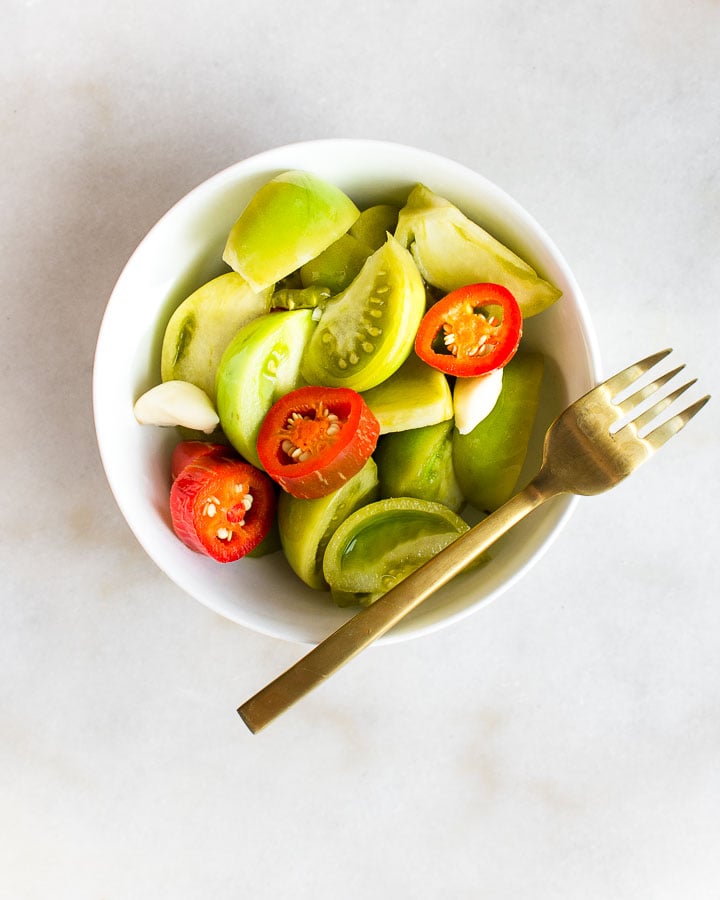

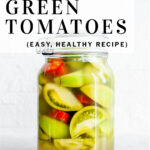
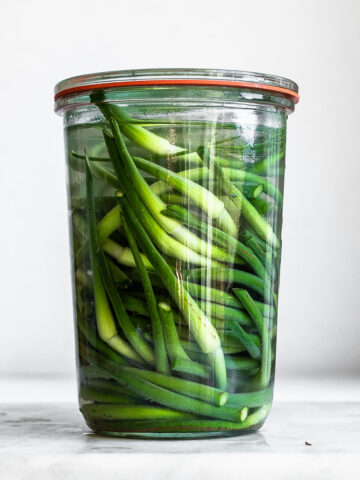
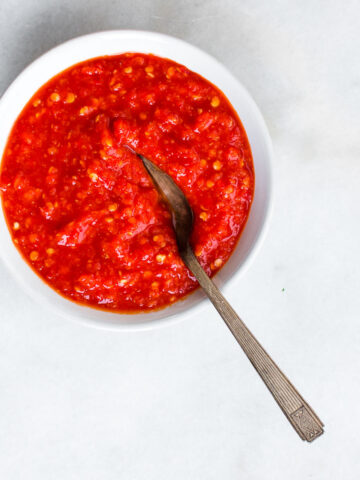
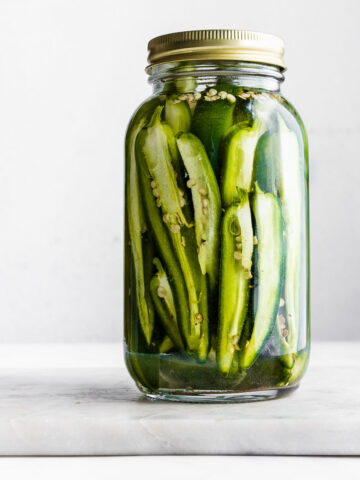
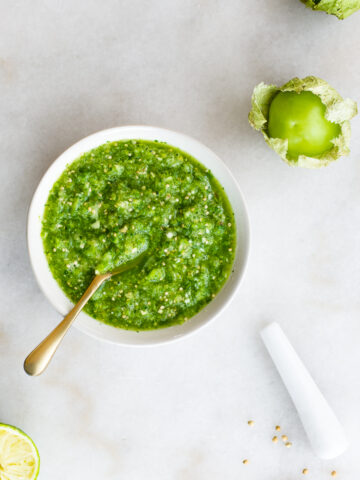
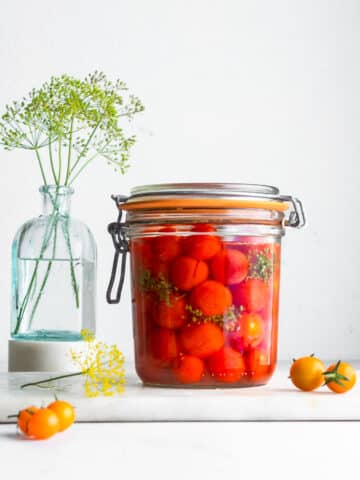
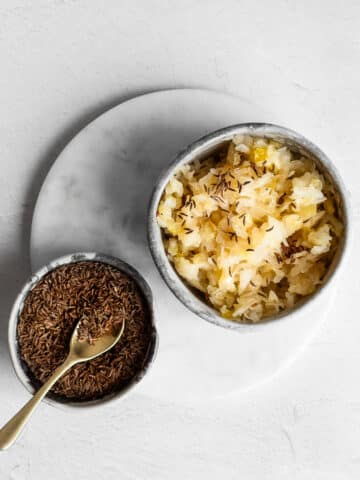
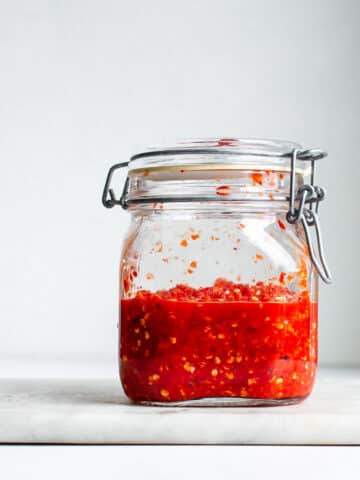
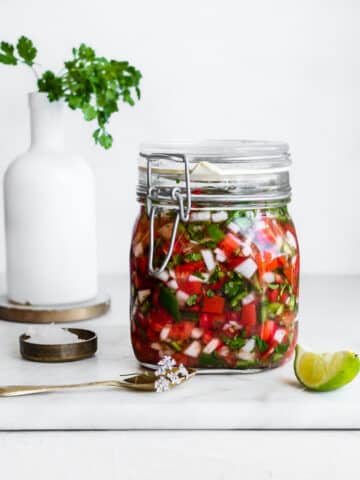
Margaret says
This was so easy and it came out delicious. Thanks!
Bill Lee says
Jenny, I have all these green tomatoes, and I love fermented vegetables but had no cabbage or Chinese cabbage (yum!) on hand. The recipe tells me all I need to know and nothing more. Just what I was looking for, a real life-changer, thank you!
James says
Tried your tomatoes and pepper they were great i've got to put up more before the garden is gone. THANKS.